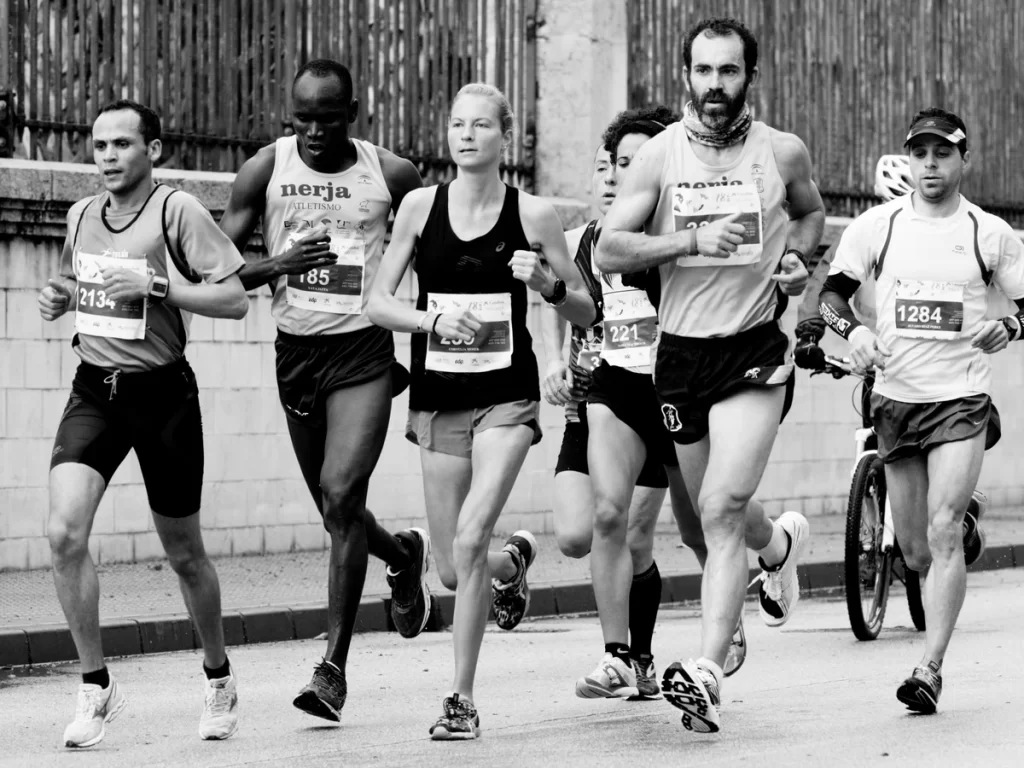“Whether you’re a weekend worrier or a full-time pro doesn’t matter. Slowing down to go faster is legit.”
Key points
- Grey zone & zone 3 are different.
- Grey zone is any training that’s done too hard or without purpose.
- Grey zone training harms fitness.
Listen to the full episode on the Performance Advantage Podcast
Trap For New Players (and some old ones)
Are you validating a good session with average pace, power or peak heart rate? Do you find that you’re pushing yourself harder and harder, but you don’t seem to be getting any faster? You’re likely doing more harm than good by training in the ‘grey zone’. Training in the grey zone means pushing too hard and not training at the right intensity. Whether you’re a weekend worrier or a full-time pro doesn’t matter. Slowing down to go faster is legit.
The Good and the Bad
Zone 3 is the ideal low dose strength and stamina building training zone. Training at “tempo” can be beneficial by inducing increases in O2 demand, cardiovascular stress, lactate shuttling and H+ buffer capacity without being completely taxing. HOWEVER, Zone 3 can quickly become the deadly “grey zone” when you push the pace on your easy or aerobic sessions. When you run your zone 1 & 2 sessions too hard, you move beyond the maximal fat utilisation intensity (65% VO2max) and begin to rely on carbohydrates. In which case, you’re not training for maximal aerobic development. You’re training in the ‘grey zone’. When you train in the ‘grey zone’ day after day, week after week, you’ll find yourself chronically tired and smack in the middle of a training plateau. Worse yet, you could end up overtrained or injured.
Zone 3 and Grey Zone Are Different
I consider grey zone training as any training completed above the designated intensity range or with no purpose. Most runners use the grey zone as a synonym for zone 3, – which is 90% of your lactate threshold. Zone 3 is physiologically associated with lactate threshold 1 (LT1) and should be considered “tempo”. Tempo training is beneficial to improving endurance performance, but only when used appropriately.
What I see happening with most runners is that they do their aerobic or easy training in zone 3 and their tempo training in zone 4. I see runners training for a marathon, hitting half marathon efforts during tempo intervals and blowing their heart rate through the roof. To me, that is also grey zone training.
When you train above your designated intensity, whether easy, aerobic, tempo or threshold, you add unnecessary and nonspecific stress to your physiological system. More often than not, the result is that your races never align with your training. Due to a lack of aerobic development and chronically elevated systemic fatigue, your running economy will suffer, and you’ll struggle in the closing stages of any race.
How to Stay Out of the Grey Zone
- Find your thresholds (pace, power, heart rate) and set your training zones. Training zones have been around for decades and can be used to dedicate and review your training intensity.
- Get a training plan. I have dozens of training plans for any distance. Each session has a specified pace, heart rate or power, so you’re not wasting any runs.
- Be honest with yourself. Picking an arbitrary finish time like a sub 3hr marathon is not the best way to prescribe your training intensity. If you’re chasing finishing times outside of your capacity, you’ll be pushing yourself too hard and doing more harm than good.




2 comments on “Dispelling the Grey Zone Myth”
I am a 64 year old male who exercises purely for health, longevity and for a regular natural high. I ruck with a 30lb ruckpack for about an hour on a hilly course 3 times a week, mostly in zone 2-3, briefly entering zone 4 for a few minutes. I also lift weights intensely for about 40minutes once every 5-6 days. Considering I am not preparing for any athletic event should I be concerned about excessive “Grey Zone” training and force myself to train in zone 2 80% of the time, or are my concerns irrelevant for my overall workout level? My experience seems to be that as long as I always take at least 1 day off between workouts I am not overtraining.
Thanks for your advice,
Joseph thorpe
Hey Joseph, Thanks for your question. Based on your goals and what you want to get out of your running. I wouldn’t worry too much about slowing down. If you begin noticing lingering fatigue or muscle soreness, then that would be a sign you need to slow down. Otherwise, if everything feels good, and you’re enjoying yourself. Keep it up!